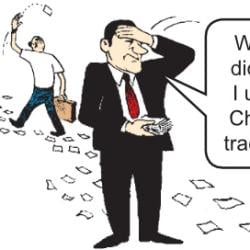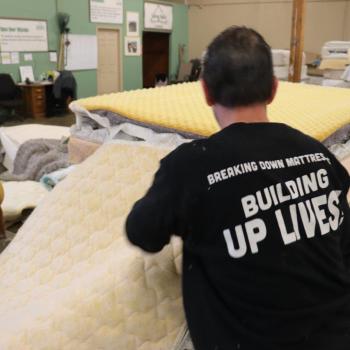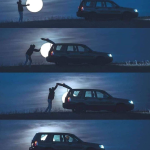I remember the ice cream machine at the Frosty’s Drive In that only open during the summer. Mom would make the drive over the mountain pass, and at the end of a day of shopping, this was our special treat. She would pull the station wagon packed with groceries and supplies and we would bounce to the counter to see the ice cream machine.
The machine would spit out chocolate or vanilla with the oversized machine that curled out ice cream with a pull of the lever. And to please some, the menu offered a “twist.” The problem is that I didn’t like either. I was a strawberry guy and the two basic and one blended choice were less than interesting.
With Mom, there was no “opting out.”
“Don’t just stand there,” she said. “Just pick one.”
The problem of just two choices
Unfortunately in our modern society, we are given moral choices that are far more serious than ice cream. We long for a black and white world, one in which right and wrong are clearly defined. Instead, both choices are a twist of the other. Increasingly, I’m just not interested and actually quite appalled.
It seems as if our choices are often narrowed down to just two. We look at one, put it down. Pick up the other, and put it down. And deep inside, we’re torn. Less repugnant is still repugnant.
I often long for the number “three.”Three seems like a better choice. When I’m given those multiple choice answers generally I’ll pick the one in the middle. “Very Satisfied. Satisfied. Not Satisfied.” Yes, the middle choice is me.
Monty Hall on the Price is Right always had a Curtain #3.
The motivational post at work even has three choices. “When something bad happens you have three choices. You can let it define you, let it destroy you, or you can let it strengthen you.”
But the division of society is rising higher and we are forced to slide to one side or another.
The problem with a Christian culture that is increasingly influenced by secular thoughts, we don’t measure our choices by God’s standard. His choice isn’t consulted, instead, we pick one of the two options and then ask for his blessing.
When faced with two evil choices – or if you prefer, two bad choices – we make the weird conclusion that we have measured the depth of depravity.
“This is bad, but not nearly as bad as the other choice.”
Both are bad. Both are evil.
Do we settle?
I had a friend in college who had two men pursuing here. She was torn. She shouldn’t have been. They were both dirtbags. One spent all his time fussing over his cigar choice and his motorcycle and had little concern for providing a stable life for a future wife.
The other was a known womanizer, but my friend was somehow convinced that she was the “last one” he would choose. “At least he has a job,” she reasoned.
A few years later she confided that she should have just waited it out.
Choosing the lesser of two evils drives much U.S. Foreign policy, and explains why we pick zealots over dictators, strong-arm capitalists over Communists, and tepid foes over dangerous enemies.
Choosing the lesser of two evils is still choosing evil.
So how much evil is acceptable when you make a choice? Is it less than 50 percent? How about less than 10 percent? How about 1 percent?
How many people stand on principle alone? Remember Shadrach, Meshach, and Abednego? They didn’t stand on the “lesser of two evils” when they stood up the Babylonians. Neither did Daniel. Peter and John chose to do “what was right in the sight of God.” They all paid a price, but they stood for what was right.
Colossians 2.8 says, “See to it that no one takes you captive through hollow and deceptive philosophy…So whoever knows the right thing to do and fails to do it, for him it is sin.”
I’m still struggling with all of this. And that’s not a bad thing.
















